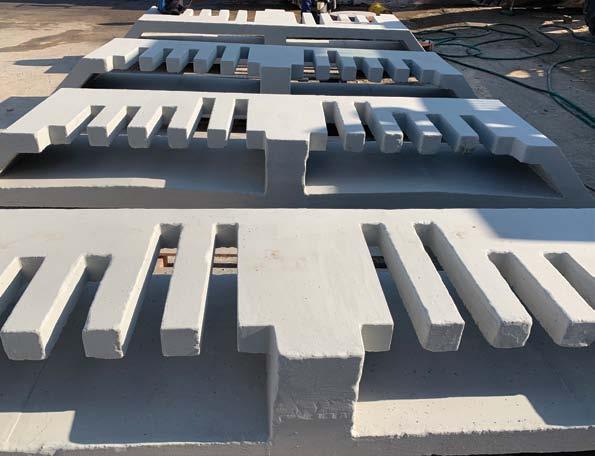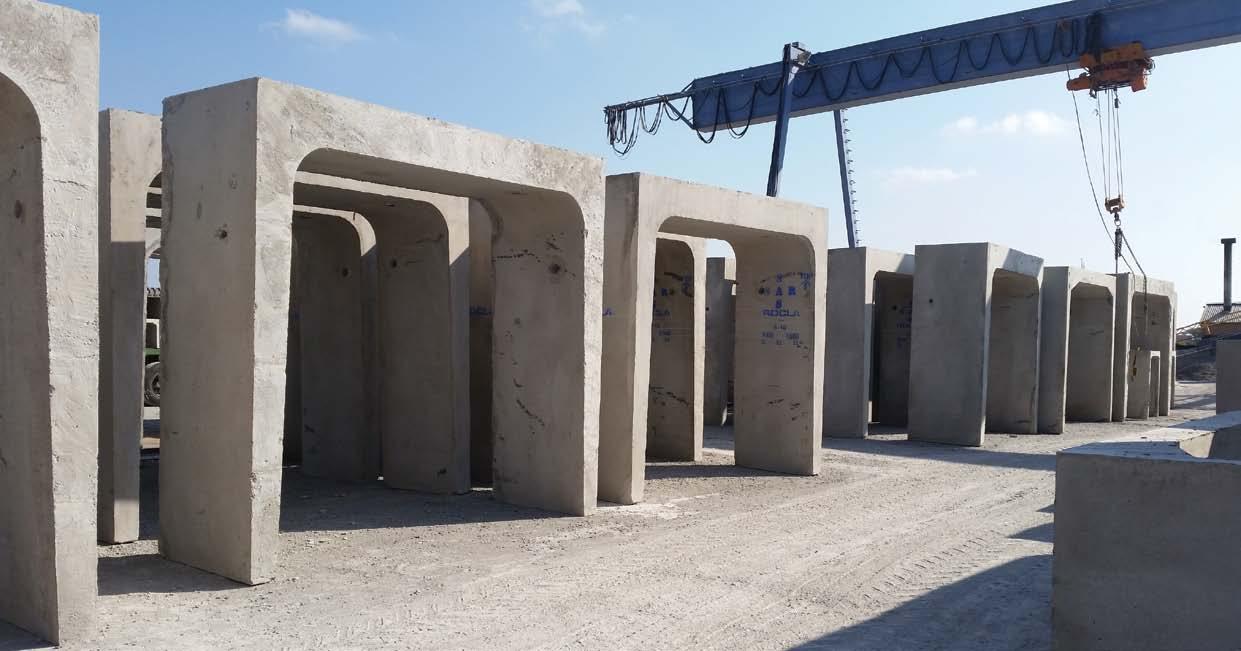
4 minute read
Twinstar Precast . . . . . . . . . . . . . . . . . . . . . . . . . . . . . . . . . . . . . . 23
There is a noticeable aesthetic quality to Twinstar’s products that results from Coetzee’s hands-on approach to everything manufactured.
While the company’s manufacturing facility is situated in the heart of gauteng, deliveries are made across the country wherever custom precast concrete products are required. the company also offers a service whereby crane mounted trucks can assist with placing of slabs during installation.
Advertisement
twinstar precast is equipped and able to provide installation services on site, in the most challenging of environments. Coetzee lists another memorable project as being the work done on closing the grootvlei mineshafts. the contractor was employed by the department of Mineral resources to ensure the safety of the communities around the defunct shafts.
“Whilst the shafts had been closed by other means on numerous occasions, they simply could not withstand the vandalism of continued illegal mining activities. Some of the shafts were extremely deep, posing safety risks to the township and the whole community. the slabs we manufactured to seal the shafts required considerable reinforcement so as to be impenetrable. It was extremely satisfying to deliver something so life-affirming to that community.”
If yOu’RE On TIME, yOu’RE LATE!
Coetzee has purposefully kept twinstar to a modest size that facilitates precision word and the short lead times it typically commits to, without compromise. “We work in quite specific ways, whereby there is no such thing as a missed deadline.” there is a noticeable aesthetic quality to twinstar’s products that results from Coetzee’s hands-on approach to everything manufactured. “one of the reasons twinstar will not create other branches or franchises is because I insist on signing things off; I will not let something leave our doors without being perfect and aesthetically pleasing.” twinstar has expanded however, having tripled the size of its factory since 2015. n


The difference precast makes
to a precast concrete wingwall
By Eamonn Ryan
“There is sometimes a misunderstanding in the construction industry concerning the cost efficiency of precast concrete over in situ concrete, with people having assumptions in favour of one or the other. From my perspective precast is generally more cost effective when we – as the precast specialists – design something ourselves, from start to finish, as opposed to following publicly published drawing for a specific in situ designed product,” says Justin Kretzmar, Rocla Sales Engineer.
he illustrates this point with reference to the precast concrete wingwall, which is required at the beginning and end of any pipeline to prevent erosion of the soil where the water flows in and out of the pipeline. “there are many standard details in the industry for in situ concrete wingwalls, with a tendency to over design these in order to accommodate for in situ inefficiencies such as poor quality concrete or insufficient placement of steel reinforcement. When we looked at introducing precast wingwalls, we did our designs for similar structural installation, but where the in situ designs generally call for a 220mm wall thickness, ours range from 80mm to 120mm. this is where material cost efficiencies can be achieved with precast.
“We obviously use a much higher strength and hence more expensive concrete, coupled with very expensive moulds designed for 25+ years of service. a precast environment has large overheads including large sites, batch plants, cranes, a long term investment into staff, health and safety initiatives and quality management systems and hence relies on long term, large and consistent order volumes in order to be viable.” but almost more importantly than material savings, precast also offers massive time savings for contractors that can assist in achieving their deadlines. “precast factories would be set up to produce high volumes, extremely efficiently, to a high quality, in a short period of time and even allowing for double shifts when necessary. this, in turn produces massive efficiencies on site, enabling the site project manager to pre-plan and prepare by ordering precast components well in advance to be ready according to a scheduled timetable to minimise delay. We can build up stock in our yard or manufacture to be ready to be delivered to that schedule to be installed almost immediately after arrival on site, minimising the requirement for on-site storage space,” explains kretzmar. “With in situ manufacture, a two to three week lead-time for construction of these similar items would have to be factored into the project lead time prior to being able to move on.
“For example, when a wingwall is cast on site it is usually about a three-week process, including the shutterwork remaining on the structure for at least one week while the concrete is curing. In our factories we can strip the same product out of a mould, if needs be, within six hours. to do so we have to use a very special concrete mix that gets us almost to the same strength as the in situ material but within that six hour period as opposed to over 28 days. an in situ product might require
“however, we generally find that the material and time savings more than offset the seemingly inefficient transport costs,” says Justin kretzmar, rocla Sales Engineer.











